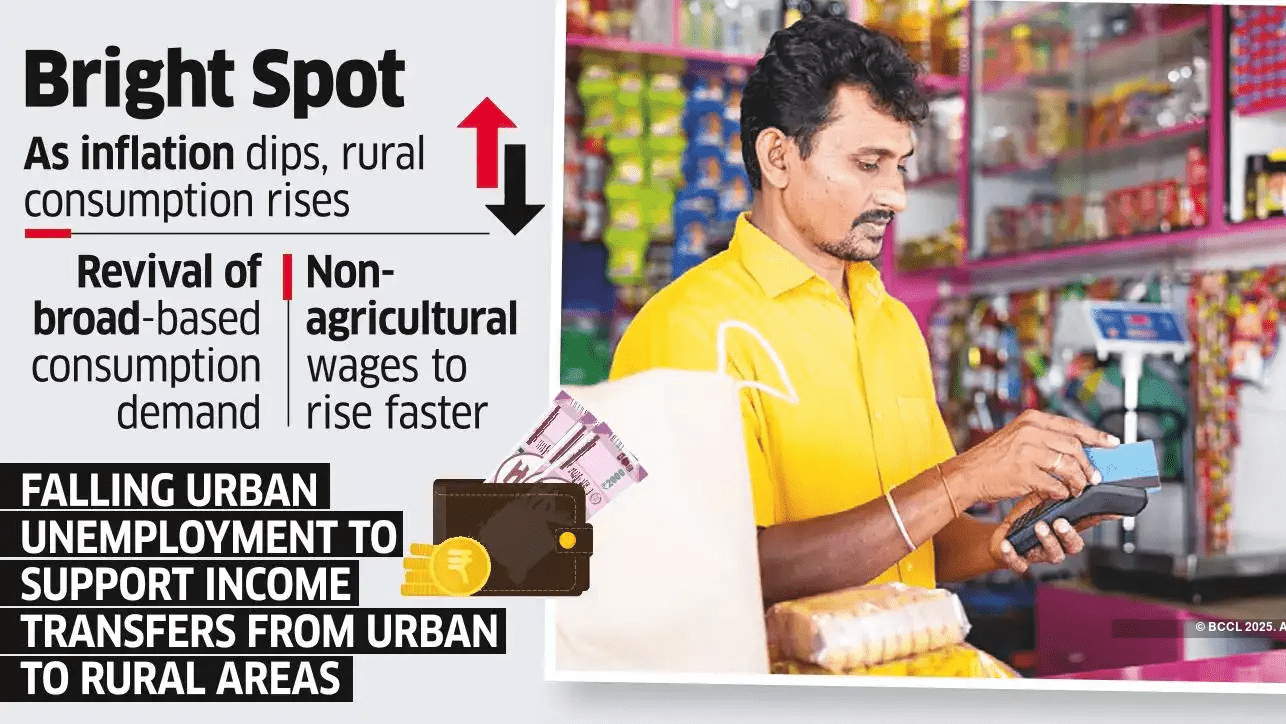The Hindu Editorial Analysis
31 May 2025
Steep decline: Rural consumption remains poor despite the lowering of inflation
(Source – The Hindu, National Edition – Page No. – 08)
Topic: GS 3: Indian Economy | Industrial Growth | Inflation Trends | Rural Consumption and Agricultural Policy
Context
- India’s Index of Industrial Production (IIP) slowed to an eight-month low of 2.7% in April, signalling persistent economic weakness, especially in rural consumption.
- The core sector output also shrank to 0.5%, marking a significant drop from the 6.9% growth in April 2024.
- While inflation has eased, rural non-durable consumption remains weak, undermining overall demand.

Introduction
Falling inflation has not lifted rural fortunes.
India’s slowing industrial output is not just a statistical dip, but a reflection of waning consumption, export uncertainty, and policy inertia in rural demand revival.
Key Data: Industrial and Core Sector Slowdown
1. IIP at 2.7%
- This is the lowest in 8 months, down from 5.2% in March.
- Manufacturing and power grew only 3.4% and 1.1%, a sharp fall from the 4.2% and 10.2% in March.
2. Core Sector Collapse
- The eight core industries (coal, crude oil, natural gas, refinery products, fertilizers, steel, cement, electricity) rose only 0.5% in April.
- This sector represents 40% of the IIP, so its weak showing is a major red flag.
The Bigger Concern: Rural Non-Durables Demand
1. Non-Durables in Decline for 3 Months
- Categories like food, soaps, household goods—core to rural consumption—have shrunk.
- Food inflation fell to 2.14%, but prices for farm produce dipped below MSP levels, dampening rural incomes.
2. Disconnect Between Inflation and Spending
- Even as retail inflation eased to 3.16%, there has been no uptick in rural demand.
- This suggests that low inflation alone does not ensure higher consumption, unless accompanied by income support or agricultural price reforms.
External Headwinds: Trade and Tariff Volatility
1. Mining Exports Down
- Exports from the mining sector (e.g., iron ore, bauxite) fell from $42 billion to $25 billion in a decade.
- Their share in total exports fell from 8.1% to 5.1%, hitting industrial output.
2. Global Risk and Overdependence on the U.S.
- With geopolitical tensions and tariff unpredictability, India must diversify exports and reduce U.S. dependence.
- Export performance remains erratic, further pressuring industrial growth.
What Should Be Done
1. Raise Rural Incomes
- Government must increase MSP coverage and procurement in a targeted, region-specific manner.
- More cash in the hands of rural consumers will boost demand for non-durables.
2. Stimulate Private Investment in Exports
- Reduce policy uncertainty, incentivize private exporters, and expand into newer markets.
3. Prioritize Food Supply Chain Reforms
- Build rural infrastructure to store, process, and transport perishables efficiently, reducing losses and raising farmer returns.
Conclusion
Industrial recovery is impossible without reviving rural consumption.
Inflation control is a milestone, not the goal—without purchasing power in the hands of the poor, economic growth remains skewed and unsustainable.
India must now transition from price stability to demand generation, especially in non-urban, agriculture-dependent regions—or risk prolonging its industrial slowdown.


